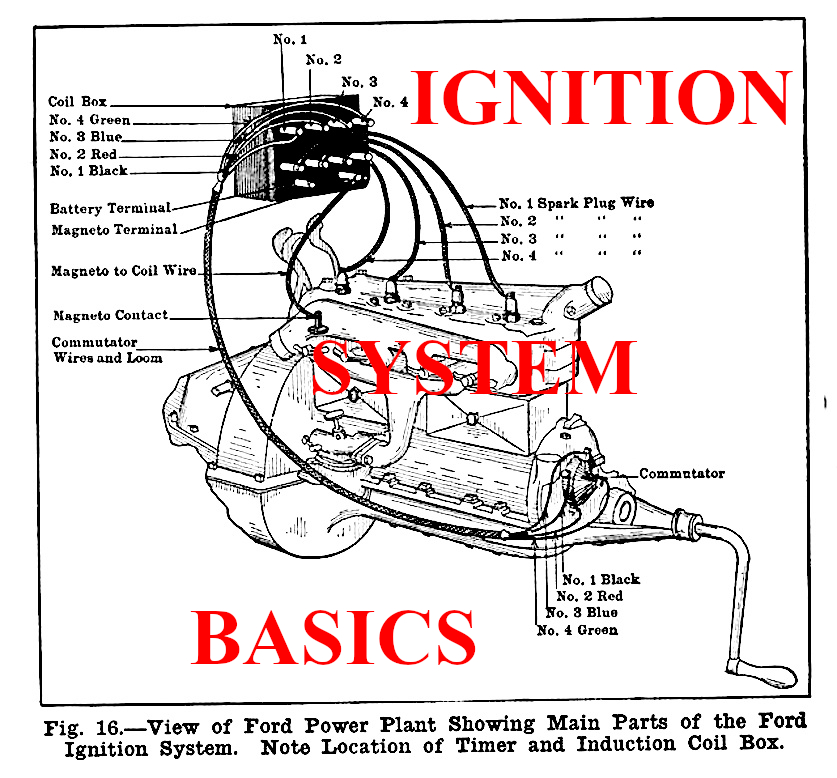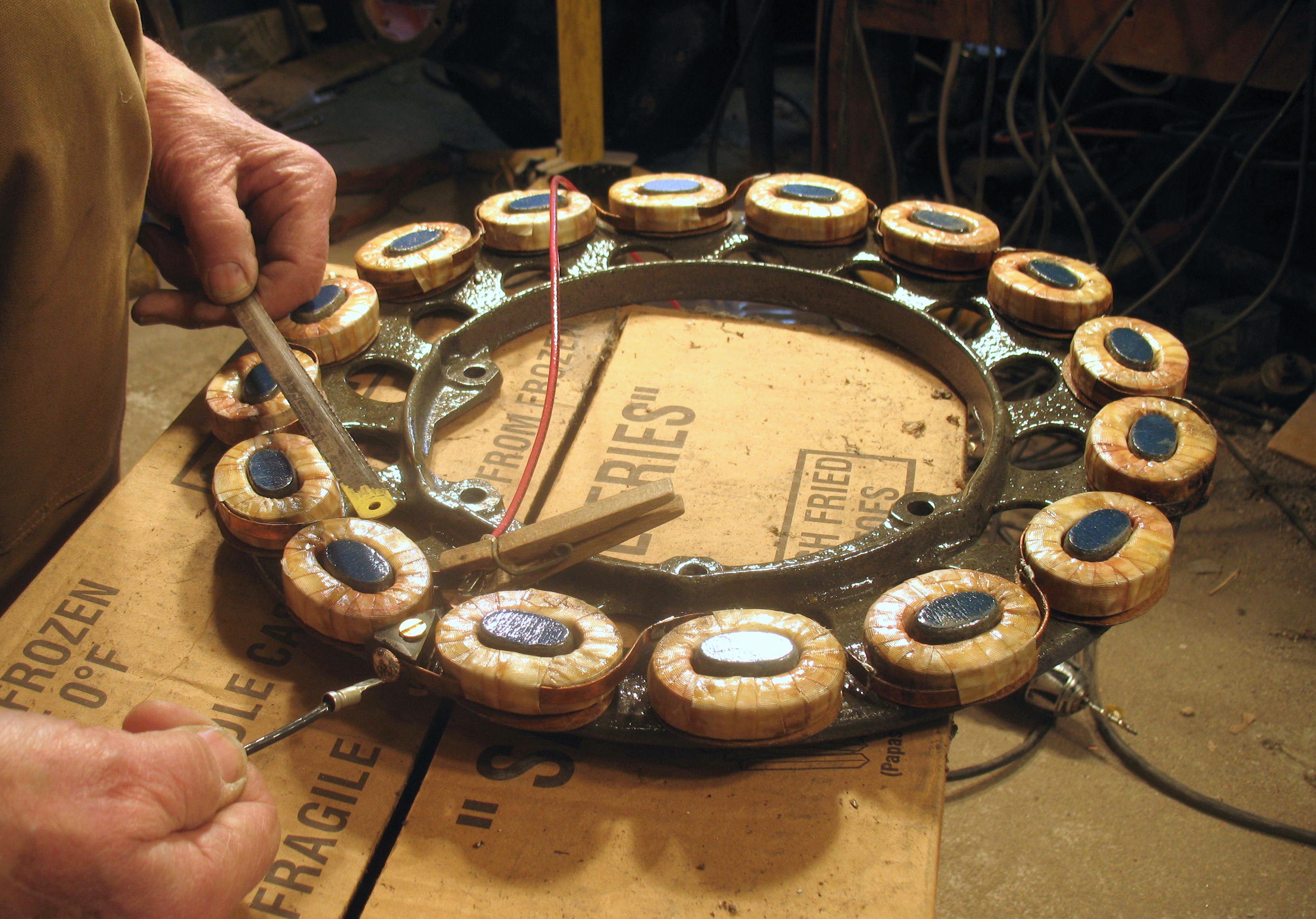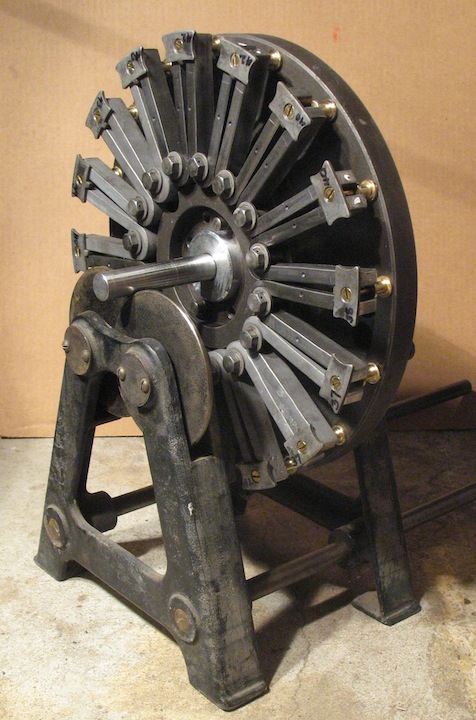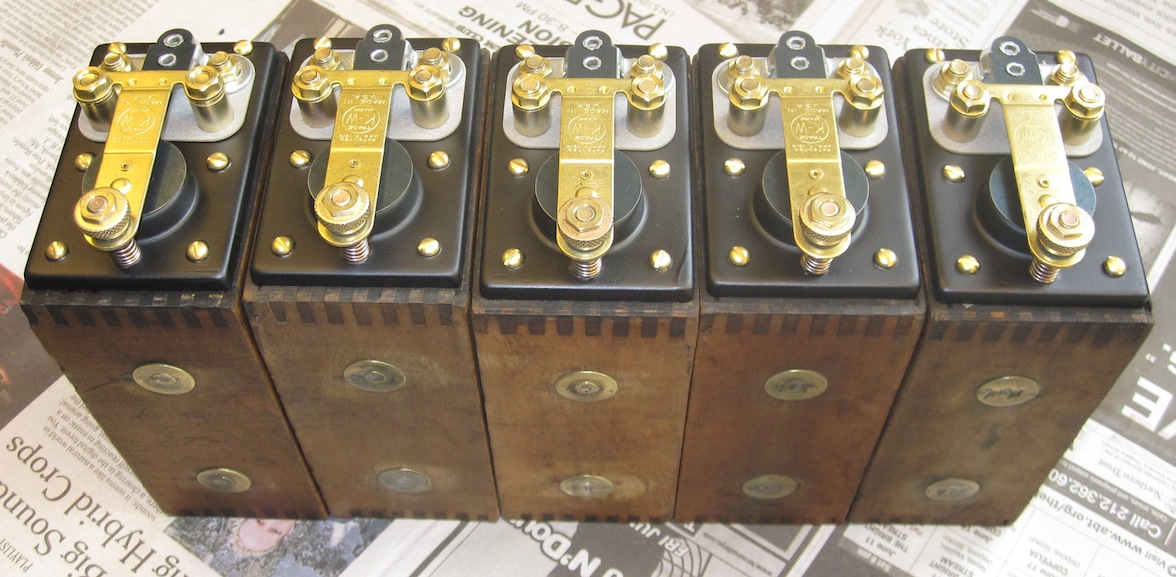
For its first ten years the Model T came from the factory with no battery. The ignition switch did have a battery connection for customers who wanted to add a battery. To start your new Ford you would turn the switch to MAG and pull the hand crank. That would move magnets on the flywheel past a ring of copper coils, generating current. That current was fed to four coils (sometimes novices mistakenly call them "coil boxes"). The four ignition coils, one per cylinder, convert low voltage from the magneto to high voltage to fire the spark plugs. To produce enough current to fire the plugs, you have to pull the crank handle quickly. Folks who couldn't pull the handle quickly enough, or who didn't want to, could install a battery to fire the coils. This part of the ignition system remained basically the same after Ford added a starting motor and a generator with a factory installed battery in 1919. Whether starting on BAT or MAG, six volts will fire the ignition coils sufficiently for starting. When the engine is running, the magneto produces much more "juice" than the battery, and the car runs better on MAG.
This drawing shows the ignition system before 1915. Note that no battery is shown. That was an aftermarket accessory the customer could install. The only thing not shown here is the switch on the front of the coil box. In 1915 electric headlamps and an electric horn were added. They worked on AC current from the magneto. The commutator (timer) on the front of the engine is a four-way switch that fires the coils in 1, 2, 4, 3 order.


